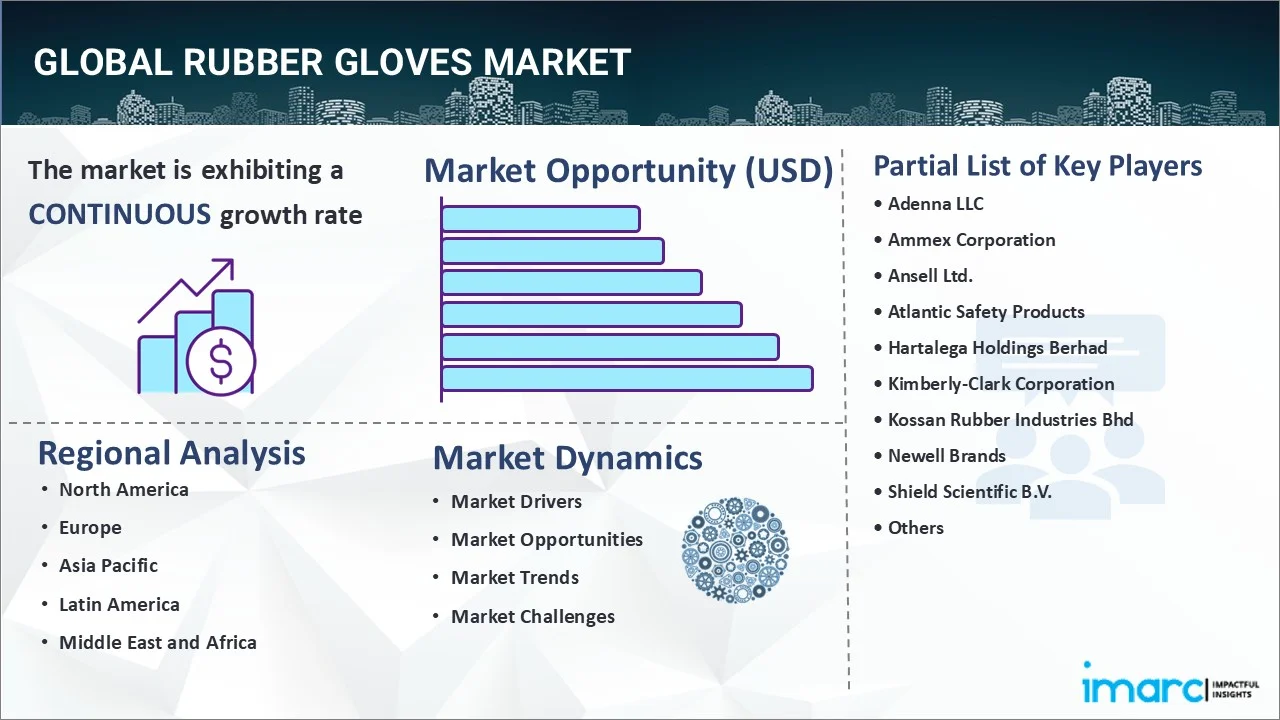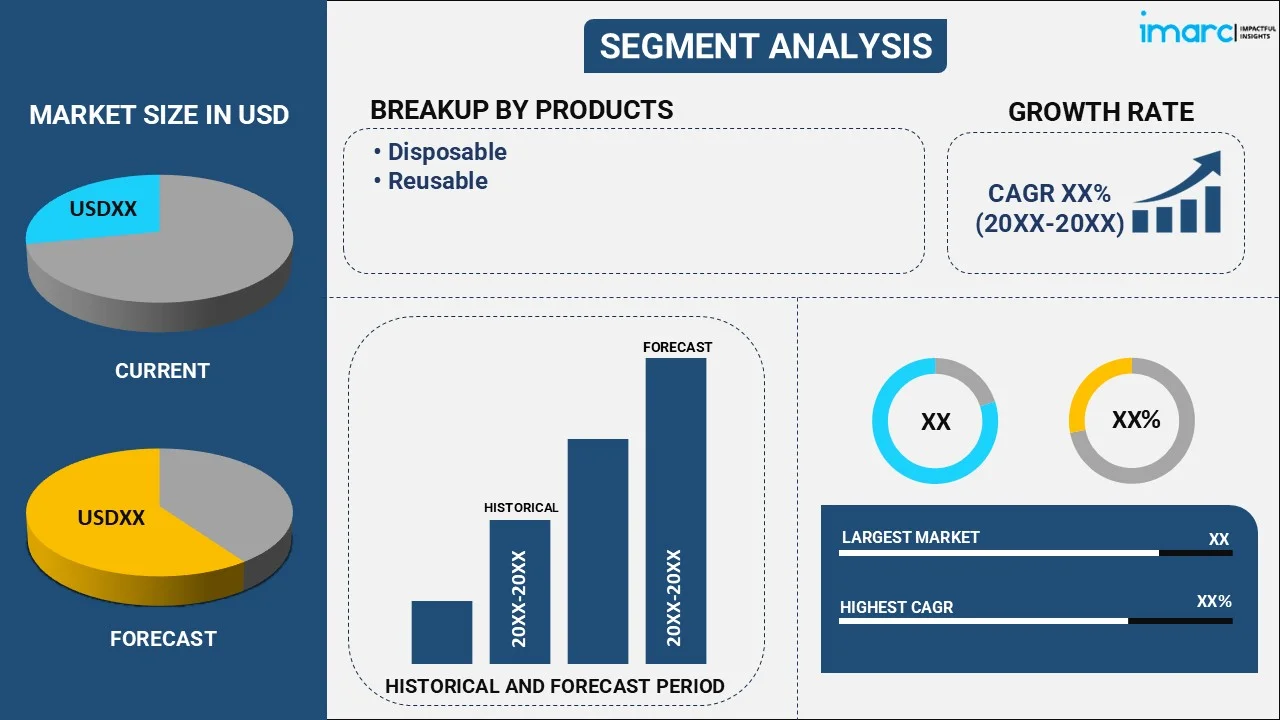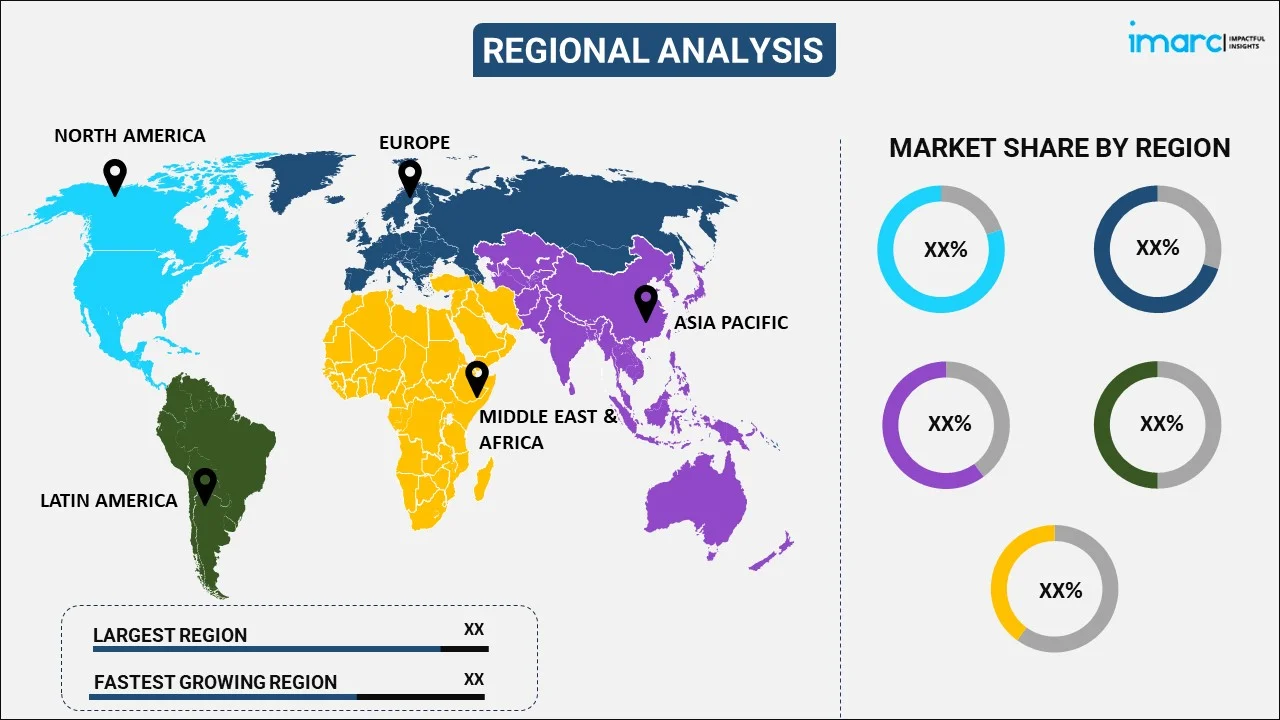
Rubber Gloves Market Report by Product (Disposable, Reusable), Type (Powdered, Powder Free), Material (Latex, Nitrile, Vinyl, and Others), End Use Industry (Healthcare, Food and Beverage, Automotive, Metal and Machinery, and Others), and Region 2025-2033
Rubber Gloves Market Size:
The global rubber gloves market size reached USD 18.3 Billion in 2024. Looking forward, IMARC Group expects the market to reach USD 39.8 Billion by 2033, exhibiting a growth rate (CAGR) of 9.02% during 2025-2033. The market is primarily driven by the increasing awareness regarding hygiene and infection control in healthcare and food industries, development of new technologies in the production of gloves, and the implementation of stringent government regulations on safety protection gear in the industrial and chemical sectors.
|
Report Attribute
|
Key Statistics
|
|---|---|
|
Base Year
|
2024
|
|
Forecast Years
|
2025-2033
|
|
Historical Years
|
2019-2024
|
|
Market Size in 2024
|
USD 18.3 Billion |
|
Market Forecast in 2033
|
USD 39.8 Billion |
| Market Growth Rate (2025-2033) | 9.02% |
Rubber Gloves Market Analysis:
- Major Market Drivers: The rubber glove market worldwide is experiencing significant growth driven by discretionary concerns such as increased hygiene consciousness in the medical and food sectors. Market growth is further propelled by drivers such as the purpose of protective gear within many sectors in response to global health crises, stricter safety measures, and higher focus on infection control measures.
- Key Market Trends: The driving trends include the shifting trend toward to natural or biodegradable gloves, the development of new technologies in the production of gloves, and the rising market for polyurethane or powder-free and nitrile gloves. Furthermore, the advancement of technologies in production and the increasing of rubber gloves in non-health related industries has escalated the product demand.
- Geographical Trends: Europe leads the rubber gloves market owing to stringent healthcare standards, high safety requirements, and growing demand from the medical and industrial industries. Furthermore, burgeoning emhpasis on sustainable practices enhances proliferation of ecological gloves in the region hence fortifying its market position.
- Competitive Landscape: Some of the major market players in the rubber gloves industry include Adenna LLC, Ammex Corporation, Ansell Ltd., Atlantic Safety Products, Hartalega Holdings Berhad, Kimberly-Clark Corporation, Kossan Rubber Industries Bhd, Newell Brands, Shield Scientific B.V., Supermax Corporation Berhad, Top Glove Corporation Berhad, Unigloves (UK) Ltd., among many others.
- Challenges and Opportunities: The market faces challenges such as cost volatility of raw materials, inorganic nature of gloves and problems that come with the usage of natural material and disposal of gloves. However, it also offers opportunities from the increasing demand for high-performance gloves for special industries such as pharmaceuticals, and the increasing concern for environment-friendly and biodegradable gloves to meet environmental requirements.

Rubber Gloves Market Trends:
Increasing Hygiene Awareness
The importance of hygiene all across the world especially in the healthcare sector has augmented the rubber gloves demand. As per WORLD HEALTH ORGANIZATION, out of every 100 patients in acute-care hospitals, 7 patients in high-income countries and 15 patients in low- and middle-income countries will acquire at least one health care-associated infection (HAI) during their hospital stay. As a result, governments and organizations such as the WHO have placed much emphasis on hygiene. This has led to a rise in demand for rubber gloves that help in avoiding contact between bacteria and patients or between patients themselves. The need for PPE also intensified after the COVID-19 outbreak as such personal protective equipment was necessary for healthcare, food industries, and accommodation services. There is hardly any industry that does not use rubber gloves to enhance safety and hygiene thereby making them an absolute necessity. The ongoing emphasis on disease and pathogen avoidance and sanitation is anticipated to prolong the need for rubber gloves, underlining their value as a barrier against germs and sickness.
Industrial Safety Awareness
The enforcement of strict measures toward industrial safety across different industries thus covering automotive, chemicals, and manufacturing industries is fueling the growth of rubber gloves. The survey conducted by the U. S. Bureau of Labor Statistics shows that industrial injuries can be associated with insufficient hand protection; therefore, enhanced safety protection is required. Rubber gloves are strictly required in the workplace by international governments due to implementing certain rules and regulations to protect the workers and avoid any chance of getting afflicted by dangerous stuff and chemicals from the machines. These regulations are most effectively implemented within industries that are prone to sharp objects, chemicals as well as extreme conditions. Thus, companies are seeking to provide their employees with protection matching existing safety standards, and rubber gloves remain a key piece of this protective equipment.
Ongoing Technological Advancements in Glove Manufacturing
The novel technological developments in the construction of gloves also played a crucial role in transforming the rubber gloves market. The advanced variants of gloves such as nitrile and neoprene types with improved features including chemicals, abrasion, and allergen resistance are now trending in industries. These materials are used in preference to normal latex gloves, particularly in hostile environments with special demands. Furthermore, the growing global concern about sustainability and environmentally friendly products is influencing the need to adopt biodegradable gloves. Advances in manufacturing processes have seen gloves more comfortable, cheaper, and versatile for use in various sectors including healthcare, the food industry, and industrial uses. With the development of various technologies, the rubber gloves market experienced the improvement of technology as a tool for increased efficiency, improvements in product quality, and addressing the needs of different industries. For instance, Top Glove Corporation, the world’s largest rubber surgical glove maker, is exploring the use of automation and digital technology in its production process to minimize its dependence on employees.
Rubber Gloves Market Segmentation:
IMARC Group provides an analysis of the key trends in each segment of the market, along with forecasts at the global, regional, and country levels for 2025-2033. Our report has categorized the market based on product, type, material, and end use industry.
Breakup by Product:

- Disposable
- Reusable
Disposable accounts for the majority of the market share
The report has provided a detailed breakup and analysis of the market based on the product. This includes disposable and reusable. According to the report, disposable represented the largest segment.
Disposable gloves dominate the rubber glove market, driven by their widespread use in healthcare, food processing, and industrial sectors. These gloves are favored for their convenience, cost-effectiveness, and ability to prevent cross-contamination. The pandemic significantly boosted demand, especially for medical-grade disposable gloves. Moreover, there has been an increased use of disposable gloves in non-medical sectors, such as food services and sanitation, which has further expanded their market share. As reported by IMARC Group, the global disposable gloves market size reached US$ 16.5 Billion in 2023. Looking forward, IMARC Group expects the market to reach US$ 39.5 Billion by 2032, exhibiting a growth rate (CAGR) of 9.9% during 2024-2032. This rubber gloves market forecast reflects the global trend toward prioritizing hygiene and safety across various industries, solidifying the dominant position of disposable gloves in the market.
Breakup by Type:
- Powdered
- Powder Free
Powder-free holds the largest share of the industry
A detailed breakup and analysis of the market based on the type have also been provided in the report. This includes powdered and powder-free. According to the report, powder-free accounted for the largest market share.
Powder-free gloves account for the largest market of the rubber glove industry because these gloves are safer to use as they don’t contain powder, which causes allergies and breathing problems. The utilization of powder-free gloves has become more common in medical, food industries, and factories because of the low risk of transferring contaminants and increased comfort. The CDC includes data to show that the usage of powder-free gloves has increased greatly over the years, and this is attributed to the rise in international concern about general hygiene and safety. This preference for powder-free gloves supports their superior market status and increased focus on reducing variability with equal effectiveness in various applications.
Breakup by Material:
- Latex
- Nitrile
- Vinyl
- Others
The report has provided a detailed breakup and analysis of the market based on the material. This includes latex, nitrile, vinyl, and others.
The market segments for rubber gloves include latex, nitrile, vinyl, and other materials as each of them have distinct inherent properties. Latex gloves were widely used in health care due to their flexibility and fine dexterity touches but are not used much now because of allergy issues. Nitrile gloves have now gained popularity over the others especially in the medical and industrial fields because they are tough, chemical resistant, no component of natural rubber latex which makes them appropriate for hazardous places. Vinyl gloves are preferred due to their cheap nature hence are commonly used in food services and places that do not pose much risk. Other materials include polyethylene, which finds specialized applications such as food handling where more care is taken because of its convenience and cheapness. All these types of gloves play their role in the market depending on the benefits of use, affecting trends and demands of various sectors.
Breakup by End Use Industry:
- Healthcare
- Food and Beverage
- Automotive
- Metal and Machinery
- Others
Healthcare exhibits a clear dominance in the market
A detailed breakup and analysis of the market based on the end-use industry have also been provided in the report. This includes healthcare, food and beverage, automotive, metal and machinery, and others. According to the report, healthcare accounted for the largest market share.
The healthcare sector dominates the rubber gloves market due to its critical need for infection control and hygiene. According to the U.S. Centers for Disease Control and Prevention (CDC), healthcare facilities may consider using disposable medical gloves that are similar to FDA-cleared surgical and examination gloves but are approved under other U.S. or international standards. This high demand is driven by stringent regulations requiring the use of gloves to prevent cross-contamination and protect both patients and healthcare workers. The necessity for gloves in surgeries, examinations, and other medical procedures ensures continuous market growth. The focus on preventing healthcare-associated infections and adhering to safety standards contributes to the robust demand for disposable gloves, thus creating a positive rubber gloves market outlook.
Breakup by Region:

- North America
- United States
- Canada
- Asia-Pacific
- China
- Japan
- India
- South Korea
- Australia
- Indonesia
- Others
- Europe
- Germany
- France
- United Kingdom
- Italy
- Spain
- Russia
- Others
- Latin America
- Brazil
- Mexico
- Others
- Middle East and Africa
Europe leads the market, accounting for the largest rubber gloves market share
The report has also provided a comprehensive analysis of all the major regional markets, which include North America (the United States and Canada); Asia Pacific (China, Japan, India, South Korea, Australia, Indonesia, and others); Europe (Germany, France, the United Kingdom, Italy, Spain, Russia, and others); Latin America (Brazil, Mexico, and others); and the Middle East and Africa. According to the report, Europe was the largest regional market for rubber gloves.
As per the rubber gloves market overview, Europe holds the largest market share of the global disposable gloves market owing to increased regulatory concerns and better safety and hygiene norms. The European market is developed as it has an efficiently developed healthcare system and strong industrial standards hence the high demand for quality gloves. They dominate because health and safety standards are well protected in such facilities, especially in the medical and food processing companies, and this calls for protective wear. Concern for quality and adherence to the European market standards makes manufacturers in the region very competitive in the market.
Competitive Landscape:
- The market research report has also provided a comprehensive analysis of the competitive landscape in the market. Detailed profiles of all major companies have also been provided. Some of the major market players in the rubber gloves industry include Adenna LLC, Ammex Corporation, Ansell Ltd., Atlantic Safety Products, Hartalega Holdings Berhad, Kimberly-Clark Corporation, Kossan Rubber Industries Bhd, Newell Brands, Shield Scientific B.V., Supermax Corporation Berhad, Top Glove Corporation Berhad and Unigloves (UK) Ltd.
(Please note that this is only a partial list of the key players, and the complete list is provided in the report.)
- Rubber gloves market manufacturers are involved in shaping the course of the industry through their strategic moves. To increase production and meet the increasing demand for gloves, Top Glove which is currently the largest global manufacturer of gloves has already set out a plan to expand its production capacity and integrate advanced technologies into its manufacturing line. Ansell is now leading in the development of new glove materials for further improvements in safety and being relevant in many areas such as healthcare and industries.. Besides, these companies are learning how to tackle supply chain issues and improving the regulation to deliver the best in the marketplace. Their strategic objectives are centered on dominating strategic market segments and they have formulated their strategies based on their ability and capacity to seize new opportunities within the context of shifting industry patterns.
Rubber Gloves Market News:
- March 8, 2024: The government is likely to bring surgical gloves and single-use medical examination gloves under the Quality Control Order (QCO) to check imports of poor-quality products and ensure better standards for those manufactured in the country.
Rubber Gloves Market Report Scope:
| Report Features | Details |
|---|---|
| Base Year of the Analysis | 2024 |
| Historical Period | 2019-2024 |
| Forecast Period | 2025-2033 |
| Units | Billion USD |
| Scope of the Report | Exploration of Historical Trends and Market Outlook, Industry Catalysts and Challenges, Segment-Wise Historical and Future Market Assessment:
|
| Products Covered | Disposable, Reusable |
| Types Covered | Powdered, Powder Free |
| Materials Covered | Latex, Nitrile, Vinyl, Others |
| End Use Industries Covered | Healthcare, Food and Beverage, Automotive, Metal and Machinery, Others |
| Regions Covered | Asia Pacific, Europe, North America, Latin America, Middle East and Africa |
| Countries Covered | United States, Canada, Germany, France, United Kingdom, Italy, Spain, Russia, China, Japan, India, South Korea, Australia, Indonesia, Brazil, Mexico |
| Companies Covered | Adenna LLC, Ammex Corporation, Ansell Ltd., Atlantic Safety Products, Hartalega Holdings Berhad, Kimberly-Clark Corporation, Kossan Rubber Industries Bhd, Newell Brands, Shield Scientific B.V., Supermax Corporation Berhad, Top Glove Corporation Berhad, Unigloves (UK) Ltd., etc. |
| Customization Scope | 10% Free Customization |
| Post-Sale Analyst Support | 10-12 Weeks |
| Delivery Format | PDF and Excel through Email (We can also provide the editable version of the report in PPT/Word format on special request) |
Key Benefits for Stakeholders:
- IMARC’s industry report offers a comprehensive quantitative analysis of various market segments, historical and current market trends, market forecasts, and dynamics of the rubber gloves market from 2019-2033.
- The research report provides the latest information on the market drivers, challenges, and opportunities in the global rubber gloves market.
- The study maps the leading, as well as the fastest-growing, regional markets. It further enables stakeholders to identify the key country-level markets within each region.
- Porter's five forces analysis assists stakeholders in assessing the impact of new entrants, competitive rivalry, supplier power, buyer power, and the threat of substitution. It helps stakeholders to analyze the level of competition within the rubber gloves industry and its attractiveness.
- The competitive landscape allows stakeholders to understand their competitive environment and provides insight into the current positions of key players in the market.
Key Questions Answered in This Report
The global rubber gloves market was valued at USD 18.3 Billion in 2024.
We expect the global rubber gloves market to exhibit a CAGR of 9.02% during 2025-2033.
The increasing application of rubber gloves to safeguard individuals from chemicals, stains, healthcare-associated infections, etc., is primarily driving the global rubber gloves market.
The sudden outbreak of the COVID-19 pandemic has led to the growing adoption of rubber gloves owing to the rising demand for personal protective equipment to combat the risk of the COVID-19 infection.
Based on the product, the global rubber gloves market can be categorized into disposable and reusable. Currently, disposable rubber gloves exhibit clear dominance in the market.
Based on the type, the global rubber gloves market has been segmented into powdered and powder free, where powder free rubber gloves represent the largest market share.
Based on the end use industry, the global rubber gloves market can be bifurcated into healthcare, food and beverage, automotive, metal and machinery, and others. Currently, the healthcare industry accounts for the majority of the total market share.
On a regional level, the market has been classified into North America, Europe, Asia-Pacific, Middle East and Africa, and Latin America, where Europe currently dominates the global market.
Some of the major players in the global rubber gloves market include Adenna LLC, Ammex Corporation, Ansell Ltd., Atlantic Safety Products, Hartalega Holdings Berhad, Kimberly-Clark Corporation, Kossan Rubber Industries Bhd, Newell Brands, Shield Scientific B.V., Supermax Corporation Berhad, Top Glove Corporation Berhad, and Unigloves (UK) Ltd.
Need more help?
- Speak to our experienced analysts for insights on the current market scenarios.
- Include additional segments and countries to customize the report as per your requirement.
- Gain an unparalleled competitive advantage in your domain by understanding how to utilize the report and positively impacting your operations and revenue.
- For further assistance, please connect with our analysts.
 Request Customization
Request Customization
 Speak to an Analyst
Speak to an Analyst
 Request Brochure
Request Brochure
 Inquire Before Buying
Inquire Before Buying




.webp)




.webp)












